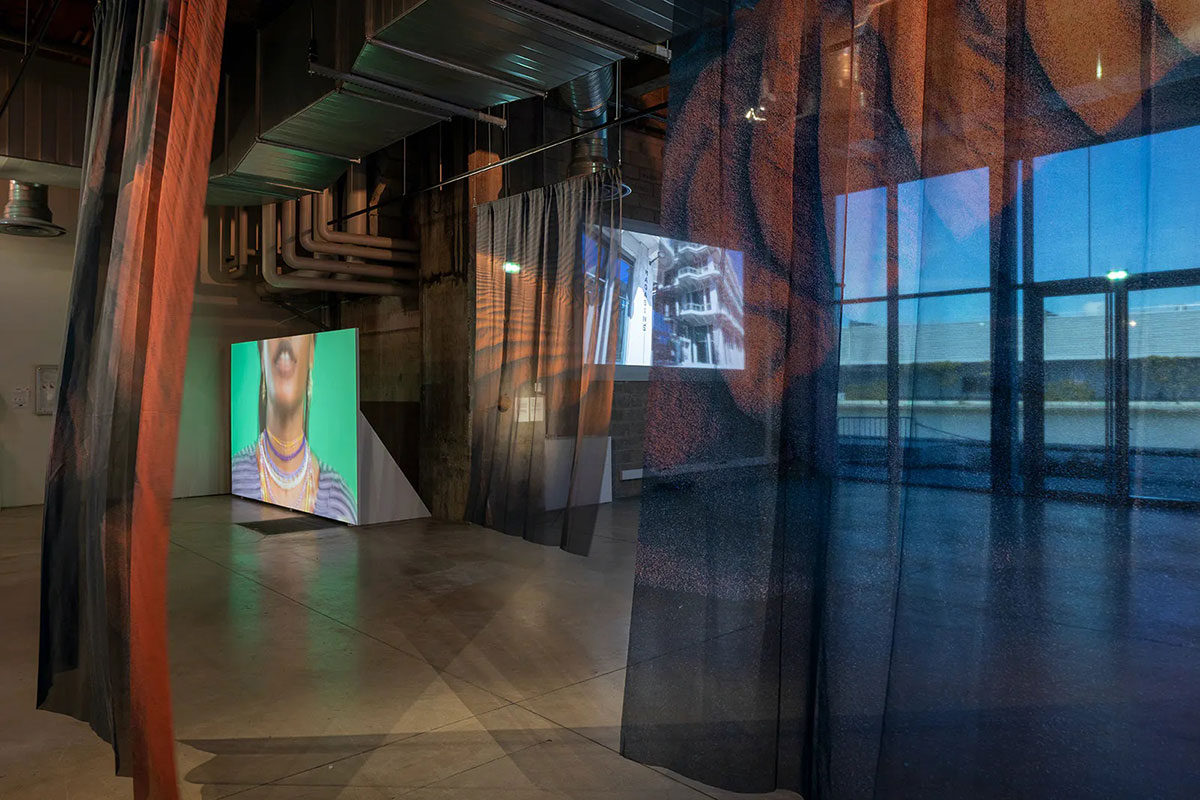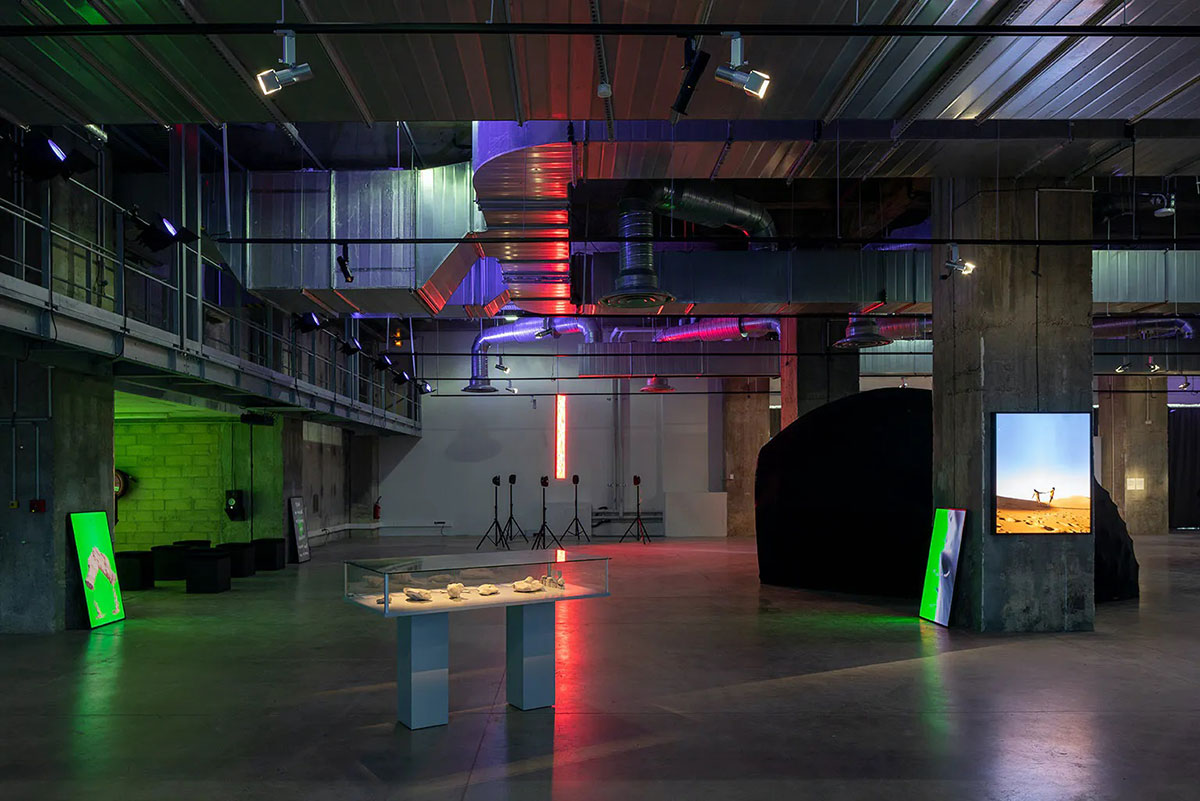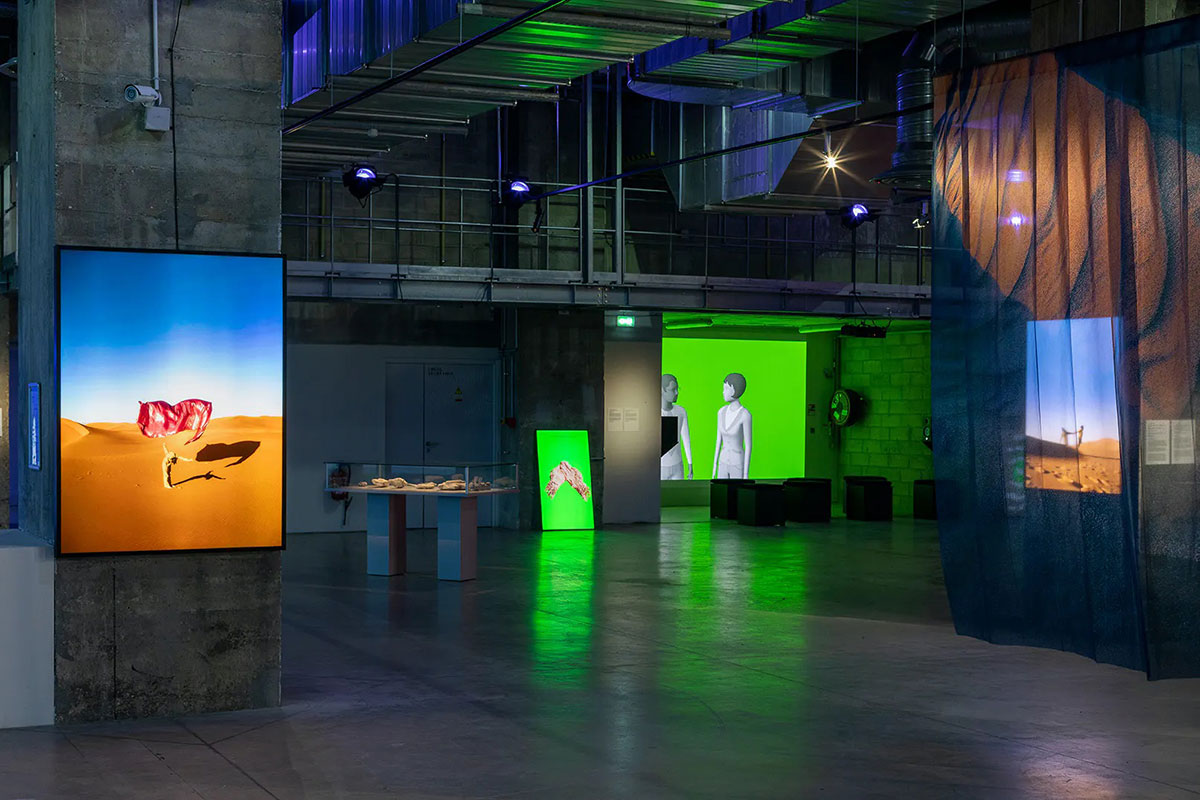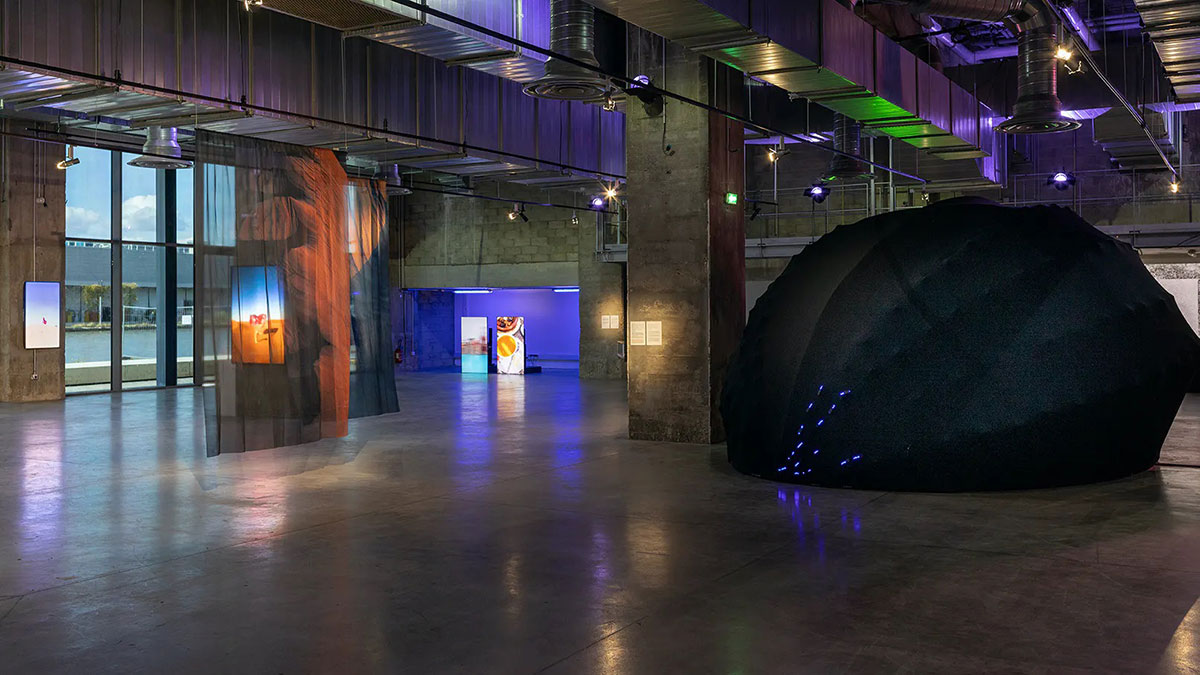ART CITIES:Paris-Hotel Sahara
 Magasins généraux presents its third summer cultural season, which explores and questions the imaginaries surrounding the Sahara not only from Europe but also from Africa and its diasporas, “Hotel Sahara” features an exhibition conceived during a residency involving ten young artists at the doorstep of the desert, a festival dedicated to performances, music, cinema, poetry and spoken words, along with a mediation and workshops programme.
Magasins généraux presents its third summer cultural season, which explores and questions the imaginaries surrounding the Sahara not only from Europe but also from Africa and its diasporas, “Hotel Sahara” features an exhibition conceived during a residency involving ten young artists at the doorstep of the desert, a festival dedicated to performances, music, cinema, poetry and spoken words, along with a mediation and workshops programme.
By Efi Michalarou
Photo: Magasins généraux Archive
The exhibition “Hotel Sahara” is the starting point of the eponymous cultural season and brings together ten young multidisciplinary artists from the Sahara’s shores. Coming from Morocco, Tunisia, Algeria, Libya, Egypt, Mali and Sudan, they have been invited to question, from their personal experiences, the major imaginaries surrounding the vast Saharan space: What it reveals, indicates, but also what it occults. For the majority of them, the Sahara occupies an ambiguous position: geographically close to their regions of origin, they nonetheless have a distant perception of it. How can we understand and inhabit this distance? How can it be questioned and put into perspective from one side of the Sahara to the other? What is being interrogated here is a relationship in absence and the registers it invokes, between remoteness, erasure and exoticism.
The exhibition is an opportunity for Alex Ayed to extend the research he has been conducting for several years on the hybridisation of systems of representation and transmission in the North of Africa. Inspired by the circulation of music in Saharan spaces, the artist proposes a sound and musical composition in the form of a freely downloadable EP. This immaterial work, whose existence is limited to a digital file, is based on recordings collected during the residency and reworked in the studio. Between landscapes and sound archives, the tracks composing the EP were produced by Alex Ayed in collaboration with several artists who participated in the residency: Hiba Elgizouli, Salim Bayri, Tayeb Bayri and Hanin Tarek.
Tewa Barnosa has created a two-part work that echoes the contemporary socio-political issues of the Sahara in Libya. The first part, “Teneri Ara Assunsu”, consists of a large LED panel that apostrophises the title of the exhibition: the phrase “the Sahara is not a hotel” is defiantly written in Tamazight. This device is accompanied by a sound composition that brings together a plurality of voices and testimonies on the contemporary situation in Southern Libya. It assembles various sources: extracts from news channels, videos circulating on the internet and interviews, as well as recordings of personal texts in Tamazight declaimed by the artist and a musician. These voices explore different events and situations that have been made minor in the international media, such as French interference and international military presences in the Libyan Sahara, the violence and exactions committed against the population or the massive displacement of civilians linked to official and unregulated mining, especially of oil and gold. For the second part, “Alphabet of Teneri” the artist created a neo-alphabet composed of 33 symbols and shapes, which is displayed in the exhibition space using miniature LED panels. Alternative, mutant Tifinagh, this alphabet mixes motifs associated with the orientalist imagination of the Sahara with objects evocative of its current political realities. Palm trees stand alongside firearms and Toyota Tundra 4x4s, the luxurious means of transport used by certain mafias and armed militias operating in the Sahara.
For the exhibition Salim Bayri was interested in the French archives on the Sahara. Who produces the official history? Where from? In what spaces are these archive documents kept? He made a video which questions the tension between the official written archives (colonial administrative documents, military reports, etc.) and the immaterial memories of the Saharan populations (oral histories, testimonies, poetry, music). The video retranscribes a performance that he carried out in the spring of 2021 on the building of the Archives nationales d’outre-mer in Aix-en-Provence, where part of the French colonial archives related to the Sahara are kept. The artist made a giant percussion stick to strike the building with musical rhythms, turning it into a resonator. He added rhythms recorded on the building of Magasins généraux that hosts the exhibition, doubling his original question: what kind of narratives can be produced about the Sahara within French cultural institutions?
Tayeb Bayri addresses the invisibilisation and erasure of the Sahara in the North African national imagination through a video work. In it, two characters wake up on the edge of a desert. They wonder about their presence in this environment, without knowing if they were about to cross it or if they had just come from it. In trying to remember, they discover traces, memories, dreams, with the worry of what they are likely to find there. This reflection on the notions of forgetting and trauma, the need and fear of remembering, is punctuated by synthetic images of bodies and objects made of sand that flow endlessly. This narrative echoes with the marginalization of the Sahara and its inhabitants.
Hiba Elgizouli focused on the female musical compositions of the Alrizegat from North Darfur. She has made a sound and video work, where she brought together nine other Sudanese artists from different regions of the country for a week of research, discussion and performance. Revisiting collectively a dance and a celebration song, the performers clap their hands to a rhythm in a chorus and in a circle. The video is interspersed with zoom-in and zoom-out effects, suggesting the initial distance from this practice and the rapprochement that is manifested through its collective and fictional reinterpretation.
Famakan Magassa focused on the Takamba using a monumental pictorial composition created directly in the exhibition space of the Magasins généraux. The Takamba is a music and dance genre practised jointly by the Tuareg and the Songhaï, and whose praxis has travelled across state borders, from the south to the north of the central Sahara and its shores. The paintings are based on videos and recordings of Takamba circulating on YouTube and WhatsApp, and on discussions the artist has had with musicians and performers in Bamako. The figures depicted dance from dusk to dawn. In addition to certain so-called “traditional” clothing and ornaments, the tahardant or takamba (a three-stringed lute emblematic of this musical genre), the artist summons a series of electronic accessories that highlight the means of dissemination of this music, which is anchored in its time.
Sara Sadik created a two-channel video installation about the return of young French people of Moroccan origin. She investigates the representations of belonging and pride in identity. The installation stages the stay of two groups of friends in an imaginary Eldorado at the edge of the desert, using the format of stories shared on Snapchat. This intersecting narrative is constructed from videos and images initially published on social networks by two young people of Moroccan origin and their group of friends, mixed with footage filmed by the artist during the residency. Between fictional elements and events truly experienced by its protagonists, “La Puissance” tells the story of their individual and collective experiences, through the prism of their utopias, their friendships, their carelessness and their excesses. The use and place of the “desert” or “Sahara” within these diasporic aesthetics and stagings of the self is also questioned.
Ahmed Serour worked on the economy of sexuality, fantasy and tourism in the context of the Egyptian oasis of Siwa. His installation “Eroded Traces” interrogates the texts and narratives that document the homosexual love affairs of seasonal agricultural workers confined to the outskirts of the oasis until 1920. The question is not so much the existence of these practices, but the way they were then reinvested − not without violence − in fantasies by international and local tourists in search of a gay orientalist paradise. Following the traces of this projection as an archeological study, the artist modelled 3D printed objects that take on the shapes and textures of objects found and buried in the sand. They appear as traces of an hypothetical past of which nothing remains but exotic constructions. These items, kind of hybrid and anachronistic fossils, are presented in a museum context, under glass, numbered and categorized, mimicking the presentation of ethnographic artifacts in Western museums.
Hanin Tarek imagined a video installation in which she performs a dance solo between a desert landscape and an urban environment. The footage mimics the framing of surveillance videos, echoing both the devices present in the city and the targeted control to which inter-Saharan movements have been subject for decades. Thus, the artist’s choreography evokes the current difficulties of movement within the Sahara. Hanin Tarek’s moves interrogate the way in which a sense of constant surveillance affects body language, while the way the video is presented in the exhibition tends to place the viewer in the position of the beholder.
Ismail Zaidy presents two new series of photographs. The first one presents, in the form of three light boxes, scenes created during the residency in collaboration with the artists Hanin Tarek, Hiba Elgizouli and Salim Bayri. The second series, entitled :Dunes Symphony”, focuses on the major motif of Saharan exoticism: the sand dune. This emblematic topography of the Sahara is, however, only a minority geography (less than a quarter). Printed on transparent veils, these photographs question the overwhelming omnipresence of this orientalist landscape, which contributes to obscuring the diversity of Saharan spaces and the living areas of its inhabitants.
Participating Artists: Alex Ayed, Tewa Barnosa, Salim Bayri, Tayeb Bayri, Hiba Elgizouli, Famakan Magassa, Sara Sadik, Ahmed Serour, Hanin Tarek, Ismail Zaid.
Photo: Hotel Sahara, exhibition view, Magasins généraux-Pqntin, 2021, Courtesy the artists and Magasins généraux
Info: Curators: Anna Labouze and Keimis Henni, Magasins généraux, 1 rue de l’Ancien Canal, Pantin − Grand Paris, France, Duration: 12/6-2/10/2021, Days & Hours: Wed-Sun 12:00-19:00, https://magasinsgeneraux.com





